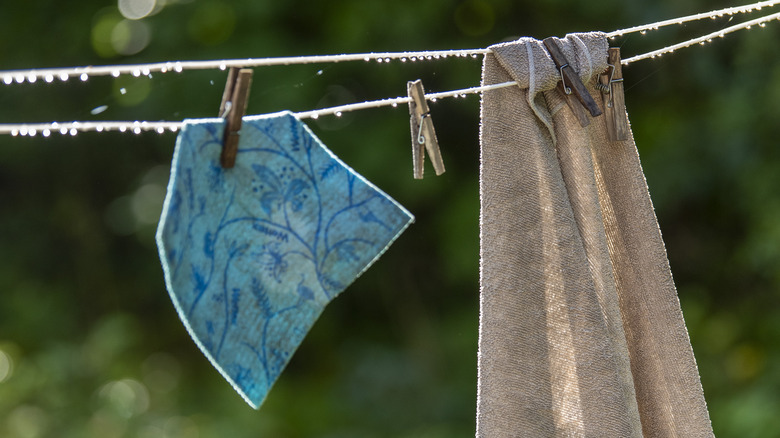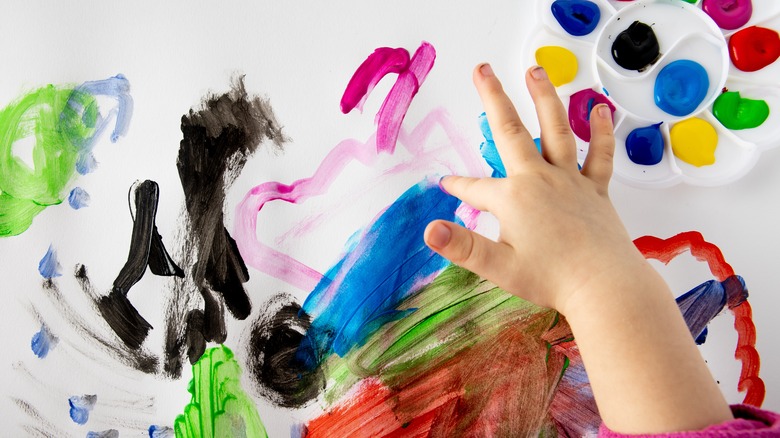What To Do With Swedish Dishcloths As They Near The End
Choosing to embrace Swedish dishcloths around the house as a cost-effective alternative to paper towels can be a wonderful decision for your budget and the environment. However, as with everything, these useful tools have a limited lifespan; once they have been used for a certain period of time, they will inevitably become worn out. Certain messes will be sure to stain the fibers of the cloth, making them difficult to restore to a pristine condition (while some websites recommend washing stained Swedish dishcloths in bleach, this is not recommended as the harshness of the cleaner can decimate the effectiveness of the cloth). Then, there's the unavoidable breakdown of fibers that comes with repeated use and washing, which will render your dishcloths less effective. But what exactly should you do with these trusty cloths once they near the end?
Generally speaking, Swedish dishcloths will last around a year — with heavy usage, they might only last nine months, but they can last longer than a year in some cases. Over time, you'll notice that your dishcloths may show signs of wear and tear: staining, fibers breaking down, frayed sides, and less effective absorbency, to name a few. Just because your dishcloths are wearing out, however, doesn't mean that they have to be instantly tossed out. You can repurpose older ones around the house for extra-messy jobs involving paint, mud, and all kinds of sticky substances. And, on the day that it is time to say goodbye, there are plenty of eco-friendly ways to dispose of them, including adding them to your garden bed.
The ins and outs of worn Swedish dishcloths
When your dishcloth looks a little worse for wear but is still capable of soaking up messes, you can use it for a variety of messy tasks. Sure, you might not want your frayed and stained dishcloth out on the countertop for guests to see, but these rough-around-the-edges tools have their merits. They make the perfect helper for wiping up children's messy paintbrushes, grubby fingers, or wiping down the area in front of your pet's feeding station. You could also easily keep one in your car for sopping up spilled drinks in a pinch. While you likely wouldn't want to use a brand-new Swedish dishcloth for cleaning up spilled paint during your next DIY, an old one can make the perfect painting rag for drips.
After fully exhausting a Swedish dishcloth's usefulness, you can look forward to returning the compostable tool to the earth. Since they are made from materials that can decompose quickly (in about 10 months, according to some reports), you can simply add your used-up Swedish dishcloth to a compost bin or the soil in your garden. For the fastest and best results, it's recommended that you cut the dishcloth up into smaller strips before placing them in the soil or a compost pile. While it can be sad to part with a useful household tool, knowing that you have fully taken advantage of all they have to offer can make the farewell a little sweeter. If you need to replace your retired Swedish dishcloths, you can find a new set of them at Costco.

